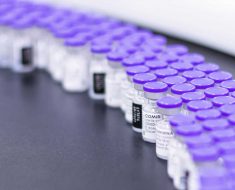
TUESDAY, Dec. 11, 2018 — After implementation of the Liaison Committee on Medical Education (LCME) diversity accreditation standards, U.S. medical schools saw increasing percentages of female, black, and Hispanic matriculants, according to a research letter published in the Dec. 4 issue of the Journal of the American Medical Association.
Dowin H. Boatright, M.D., from the Yale School of Medicine in New Haven, Connecticut, and colleagues used Association of American Medical Colleges data from 2002 through 2017 to examine the change in matriculant sex, race, and ethnicity at 120 U.S. medical schools after implementation of the LCME diversity accreditation standards in 2009.
The researchers found that the number of matriculants increased from 15,976 in 2002 to 18,853 in 2017. In 2002, 49 percent of matriculants identified as female, 6.8 percent as black, 5.4 percent as Hispanic, 20.8 percent as Asian, and 67.9 percent as white versus 50.4, 7.3, 8.9, 24.6, and 58.9 percent, respectively, in 2017. In the preimplementation period (2002 to 2009), the percentage of female and black matriculants decreased annually, while the percentage of Hispanic and Asian matriculants increased. White matriculation did not significantly change. However, postimplementation, the percentage of female and black matriculants increased significantly, while the percentage of Hispanic matriculants continued to increase. The overall percentage of white matriculants decreased by 4.2 percent in 2012 but did not significantly change thereafter.
“Institutions that successfully implemented programs to adhere to accreditation standards could serve as models for further improving physician diversity,” the authors write.
One author disclosed financial ties to pharmaceutical and medical device companies.
Abstract/Full Text (subscription or payment may be required)

Posted: December 2018
Source: Read Full Article





